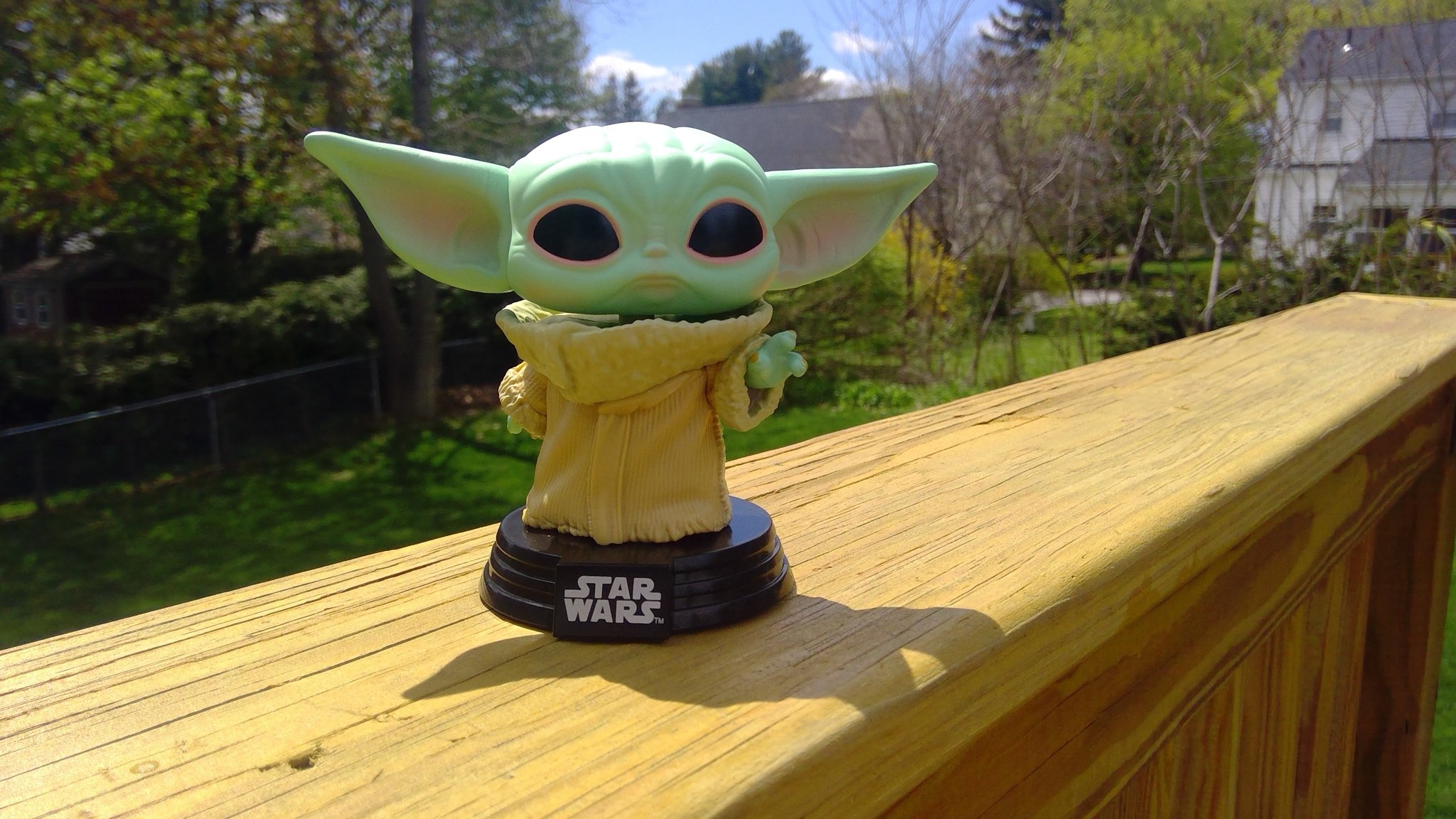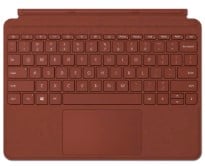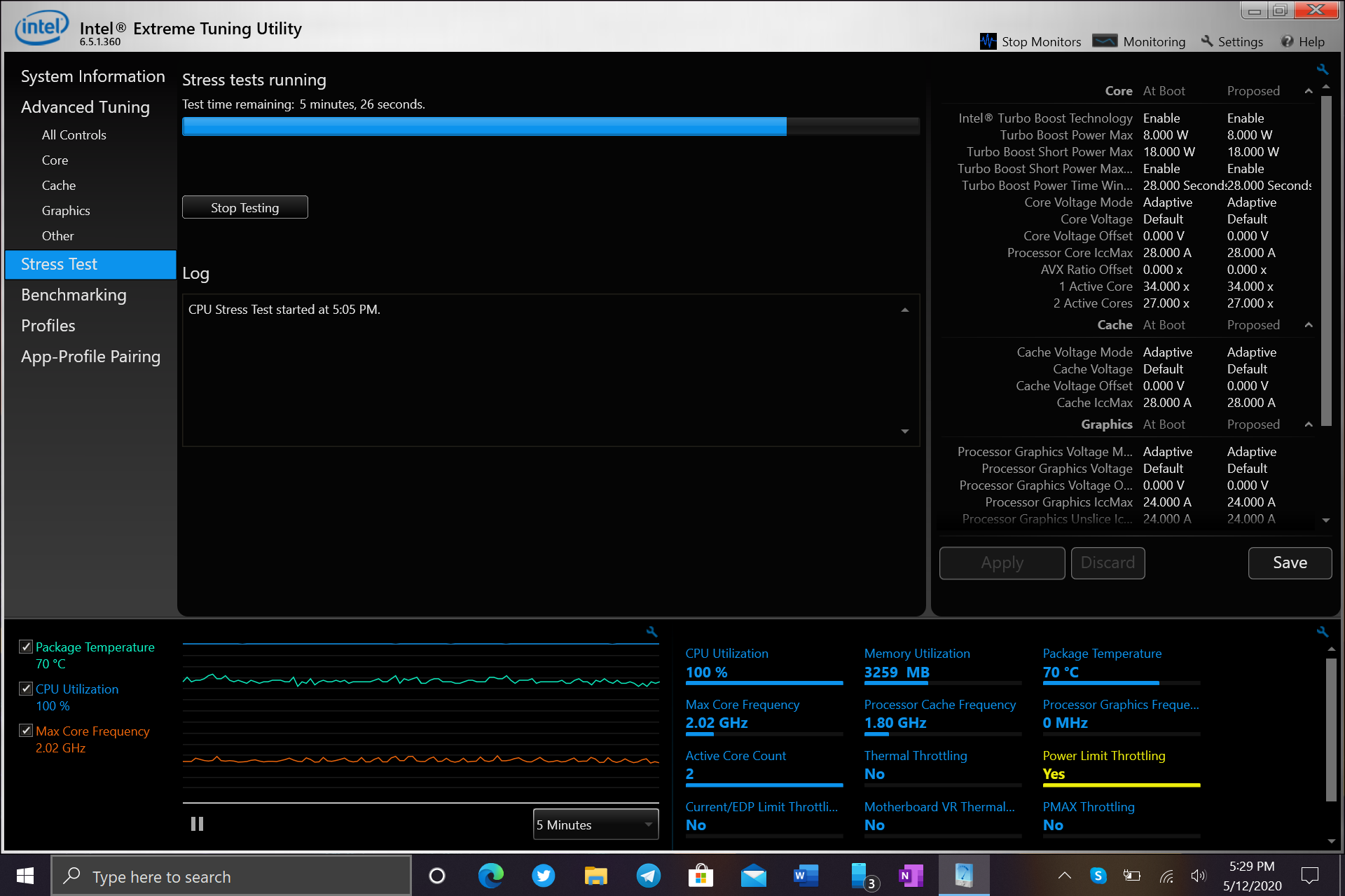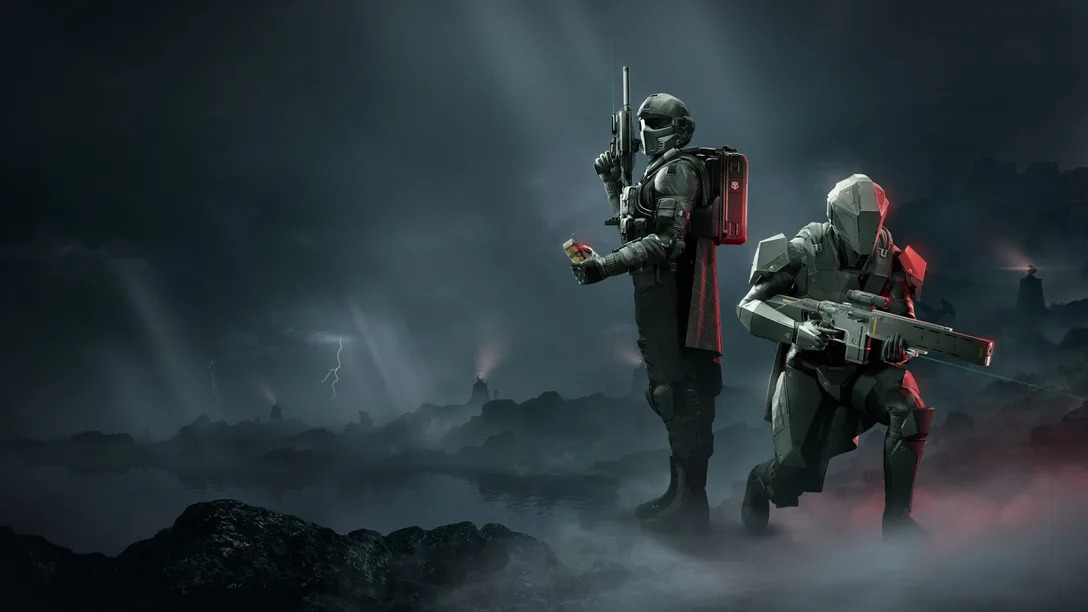Microsoft's Surface Go came as a surprise release in the summer of 2018. It had been three years since the similar Surface 3, filling the vaunted lower-end and more portable tablet PC segment.
While the Surface Go has since won many converts and fans, it has always been held back by its middling Pentium processor. The Surface Go 2 fixes that by offering a pricier Core m3 option, which effectively solves many of the Go's limitations. Add a slightly bigger display (with smaller bezels), and Microsoft has pushed the Surface Go 2 as far as it can, which is great but also reflects poorly on Intel.
Here is how Surface Go 2 stacks up against its predecessor, and why it is still a remarkably fun and nimble PC even if it costs a little bit more this time.

$399 at MicrosoftBottom line: With the Core m3 processor, Surface Go 2 finally feels like a real PC. With nearly double the performance and no loss on battery life, the Go 2 is even more capable (and satisfying) than before. Toss in thinner bezels and a rich set of features, and there is still nothing else like Surface Go 2. But Surface Go 2 also proves there are some severe limits to how far Microsoft can push this design.
Pros
- Excellent, premium design, and kickstand.
- Core m3 model makes a huge difference.
- Outstanding display now with thinner bezels.
- Optional 4G LTE is great.
- Nothing else like it.
Cons
- The Pentium 4425Y model is still disappointing.
- The cost went up for the model you should get.
- Battery life just below all-day at 7 hours.
- Core m3 is old, only dual-core.
Mini Surface Pro
Microsoft Surface Go 2 technical specifications

The Surface Go 2 is a 2-in-1 tablet PC that can be accurately described as a mini-Surface Pro. Despite the weaker processor, everything about the Surface Go 2 is premium, including its fully articulating kickstand.
This year, the Surface Go 2 gets a bit more complicated thanks to two processor options. And unlike other laptops, the choice is dramatically different.
There is the Intel Pentium Gold 4425Y, a small bump from the previous Pentium Gold 4415Y in the original Surface Go. There's not much to say about this chip – it is 100Hz faster and uses UHD Graphics 615 (instead of HD Graphics 615). The Pentium Gold 4425Y is found in the $399 and $549 models of Surface Go 2.
All the latest news, reviews, and guides for Windows and Xbox diehards.
| Category | Surface Go 2 |
|---|---|
| Operating System | Windows 10 Home in S mode |
| Display | 10.5 inches, 3:2 aspect ratio 1920x1280 (220 ppi) resolution |
| Processor | Intel Pentium Gold 4425Y (1.7GHz) Intel Core m3-8100Y (3.4Ghz) |
| Graphics | Intel UHD Graphics 615 |
| Memory | 4GB 8GB |
| Storage | 64GB eMMC 128GB SSD 256GB SSD (commercial) |
| Expandable Storage | microSD |
| Surface Pen | 4,096 levels of pressure, tilt support |
| Camera | 5MP front-facing with Windows Hello 8MP rear auto-focus |
| Security | Windows Hello face sign-in |
| Connectivity | Wi-Fi IEEE 802.11 a/b/g/n/ac/ax compatible, Bluetooth Wireless 5.0 LTE Advanced Qualcomm Snapdragon X16 LTE Modem |
| Ports | 1x USB-C, 1x Surface Connect, microSDXC card reader, 3.5mm headphone jack |
| Audio | 2W stereo speakers with Dolby Audio Premium |
| Battery | Up to 10 hours |
| Dimensions | 9.65 inches x 6.9 inches x 0.33 inches (245mm x 175mm x 8.3mm) |
| Weight | Wi-Fi: 1.2lbs (544g) LTE: 1.22lbs (553g) |
| Colors | Platinum |
| Price | Starts at $399 |
However, the Intel Core m3-8100Y is a different story. While this processor is a few years old, it offers a substantive jump in performance, so much so that it makes it hard to recommend the Pentium Gold 4425Y model at all. But the pricing for the Core m3 starts at $629 (8GB RAM, 128GB storage), making it less of a value buy.
There are other differences between the Pentium Gold and Core m3 models. That $399 model has much slower eMMC for storage compared to the faster SSD found in the $549 and up models. RAM is also at just 4GB for the entry-level edition.
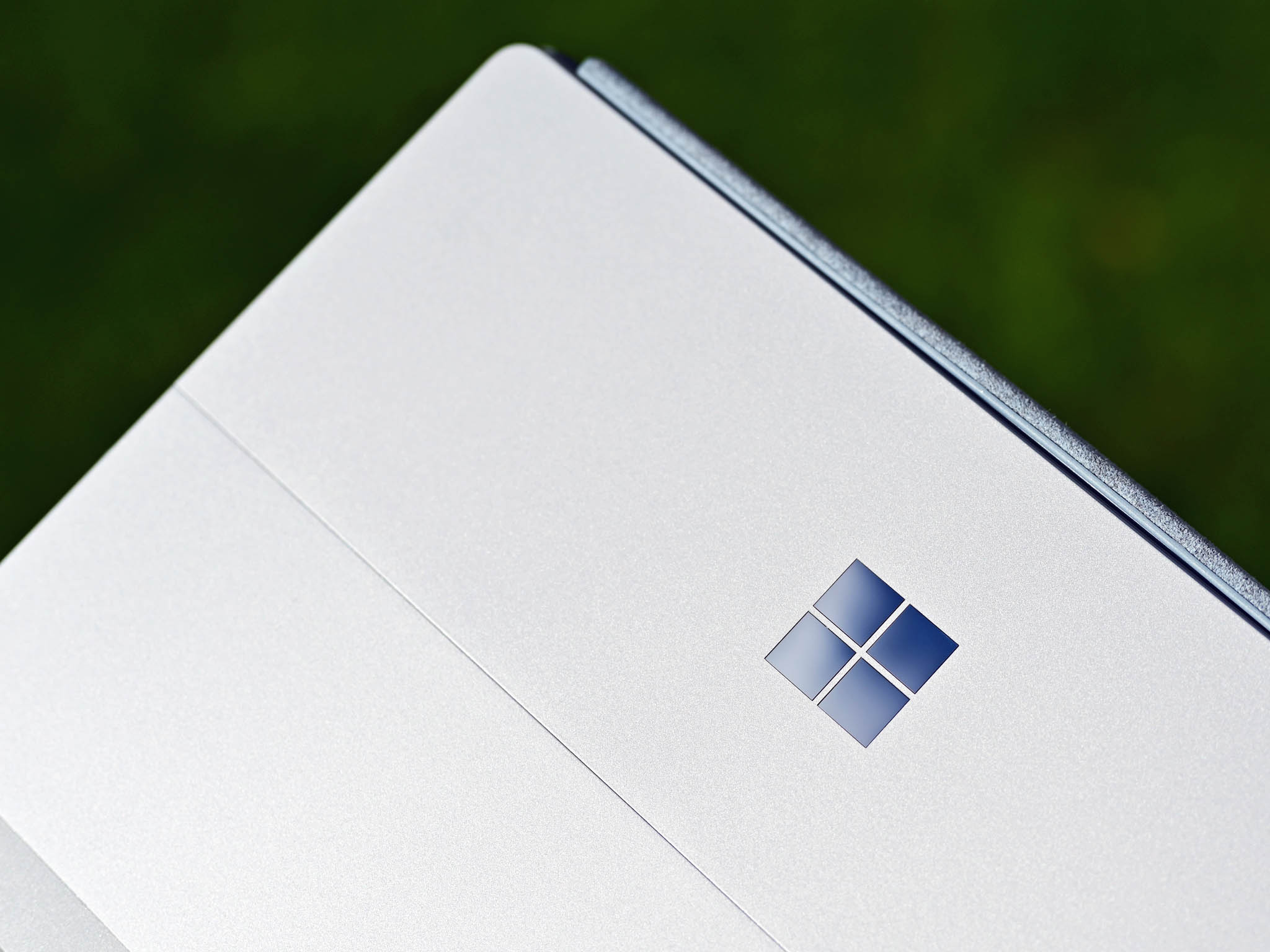
But one notable change that applies to all Surface Go 2 editions is the larger display. Microsoft thinned the gargantuan bezels from Surface Go, and the result not only looks better, but the display's size has grown from 10-inch (1800 x 1200) to 10.5-inch (1920x1280). The pixels-per-inch (PPI) also modestly increased from 216 PPI to 220 PPI.
There is no other tablet PC this size that does this much.
Microsoft is also launching the Surface Go 2 with optional 4G LTE, which includes both a physical nano-SIM and electronic SIM (eSIM) capability. The Surface Go 2 with LTE is only in the top-of-the-line model with 128GB SSD, 8GB of RAM, and Core m3 for $729. It is the version used for this review.
For ports, nothing has changed. There is a single Type-C with USB 3.1 Gen 2, microSDXC slot (behind the kickstand), headphone jack, and Surface Connect for charging. That Type-C port can power one 4K display at 60Hz, or two full HD displays also at 60Hz. It can also be used for charging and data for thumb drives.
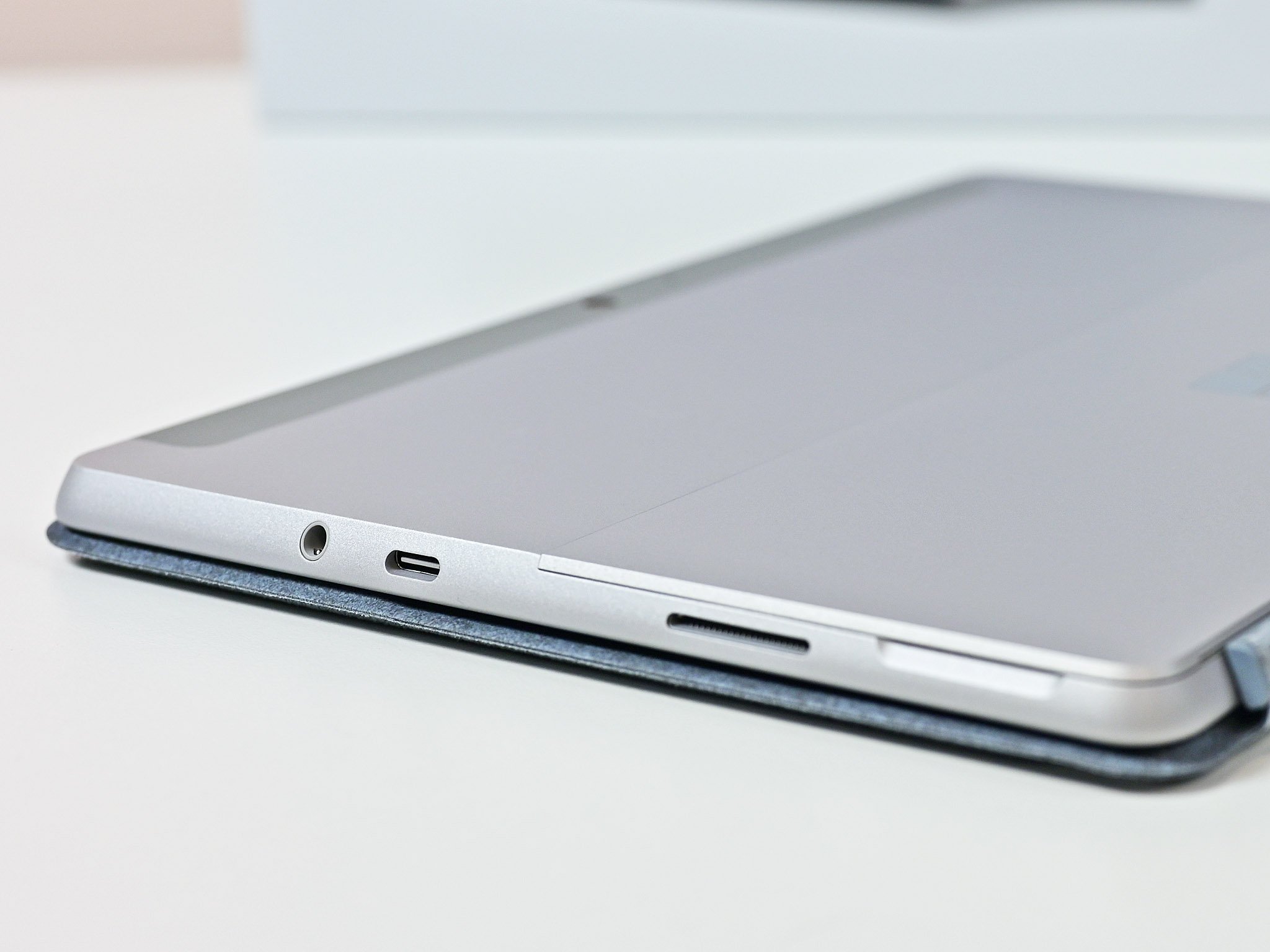
The 128GB SSD has about 81GB of free space after the initial setup. The Surface Go 2 ships with Windows 10 version 1909 (build 18363.15) in S Mode. Switching out of S-Mode is very easy with a simple button click in the Microsoft Store – you don't even have to reboot. The new Microsoft Edge came pre-installed to and pinned to the taskbar along with a few Office applications.
An awesome screen
Microsoft Surface Go 2 display, inking, audio, and cameras

While I regularly criticize Microsoft for not adding anti-reflective coatings to its display or skimping on Dolby Vision, both of which apply here, the Surface Go 2's screen is still remarkable at this price range.
The Go 2's screen can hit nearly 400 nits of brightness, which is brilliant. While many high-end laptops can go to 500 or even the rare 600 nits, Go 2's brightness level is more than enough indoors and can be used with moderate success outdoors too.
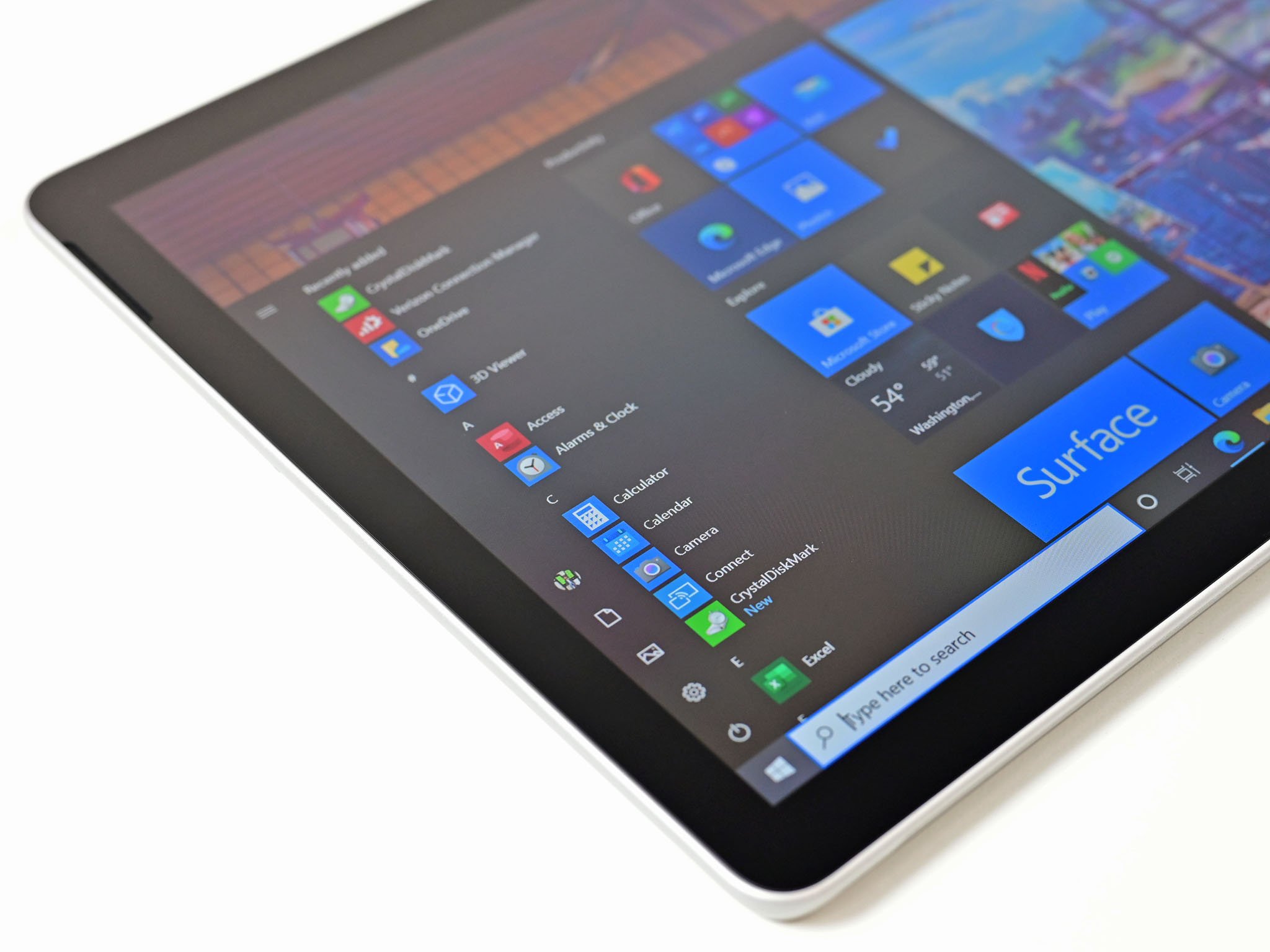
Color accuracy is also exceptionally good with 100 percent sRGB, 74 percent Adobe RGB, and 78 percent DCI-P3. Those numbers are similar to the Surface Pro 7 and reinforce the idea that Surface Go 2 is a mini Surface Pro instead of a cheap Surface.
The 10.5-inch 1920 x 1280 display has the familiar 3:2 Surface aspect and excellent contrast at 1400:1. It is a sharp, colorful display with exceptional viewing angles.
Surface Go 2 is fun, agile, and now a capable PC that benefits anyone who needs a tiny "real" computer.
The thinner Surface Go 2 display bezels now look normal. They're not crazy Dell-InfinityEdge-thin, but there's a reason for that. The Surface keyboard now comes right up to the bottom of the display. Were the Go 2's bezels any thinner, either the keyboard would overlap onto the screen, or Microsoft would have to have a larger bezel just on the bottom, which ruins the symmetry. As is, your hand sometimes blocks the tiny Surface Go 2 display when typing, so it is not evident how those bezels could be made even thinner.
Inking has not changed between Surface Go and Surface Go 2. Both the regular Surface Pen and the new Surface Slim Pen work with the same 4,096 levels of pressure, tilt support, and Bluetooth.
Microsoft is emphasizing the cameras on the Surface Go 2 for a good reason. While nothing has changed between the previous generation and this one, the Surface Go 2's 5MP front-facing camera is the same one found in the Surface Book 3. It's not just beyond average — it is likely the best front-facing built-in web camera on any laptop. Due to workers and students needing to work from home, Surface Go 2 is an ideal teleconferencing companion. That notion is validated further with the new dual "Studio" microphones, which deliver excellent audio fidelity.
That front-facing camera is also Windows Hello compatible, letting you log in to Windows 10 with just your face. It is fast, reliable, and another premium feature that you won't find in any $400 laptop.
The speakers are first-rate. They are stereo, front-facing and nearly invisible. The positioning delivers good audio separation and volume that is aimed at your ears when using the Surface Go 2 in keyboard mode. While there is not a lot of bass, the sound is rich and enjoyable.
still the best
Surface Go 2 Type Cover is now stickier
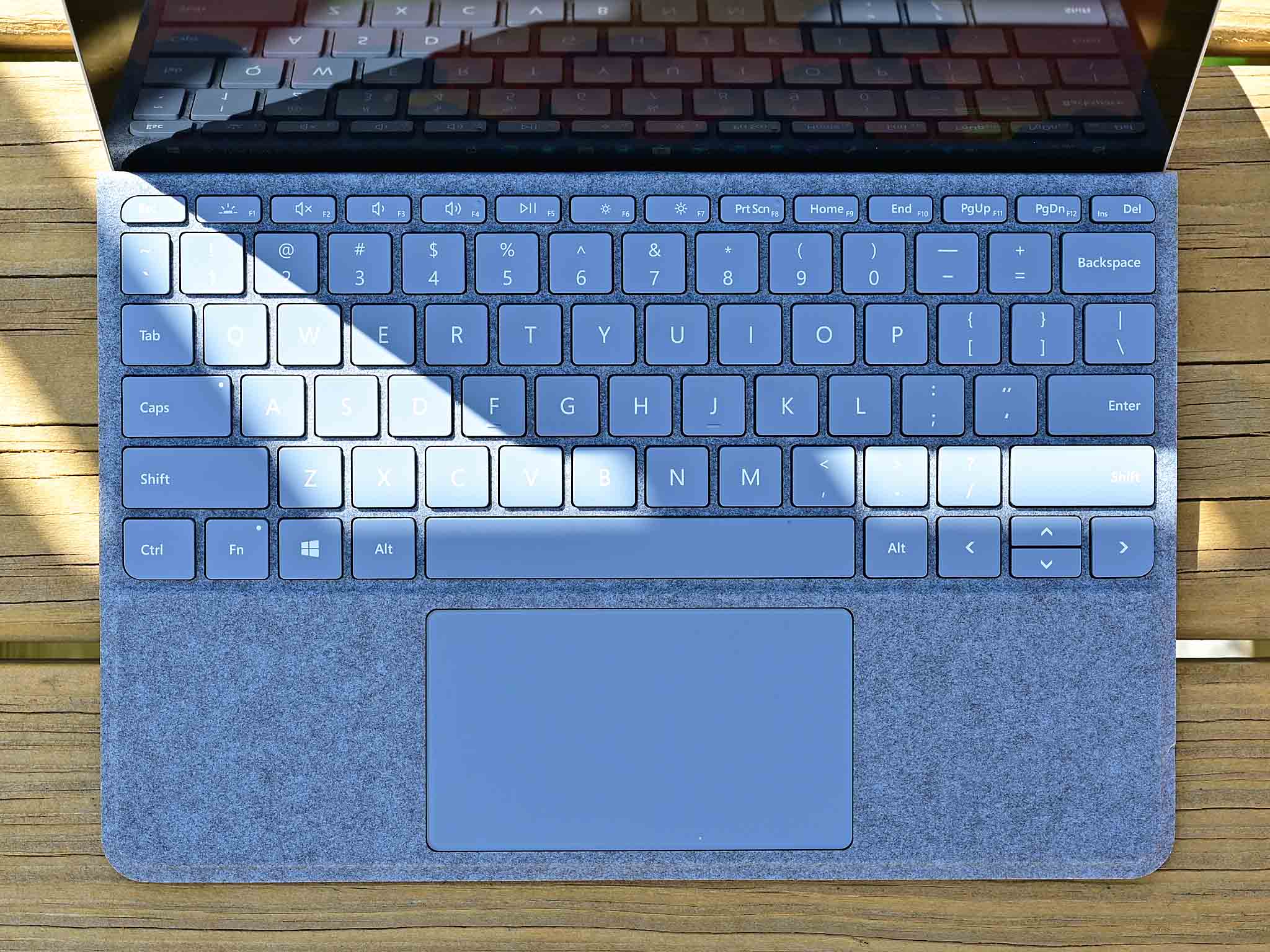
There is no debating that the Surface Type Cover ($130) is a required purchase to make full use of the Surface Go 2. At least you get to pick one of three Alcantara-based colors, including ice blue, poppy red, and platinum. You can also save $30 with just a black, microfiber one, which costs $100.
The size of the Type Cover is small at just 9-inches across. Many people will find it too small at first. However, after some time, you realize it is not only usable but quite fantastic considering the constraints. It is hard to fathom how anyone could make a better keyboard at this size. The key travel is better than some full-sized Ultrabooks, and there is ample backlighting. While those with larger hands will feel cramped, this criticism feels obvious when talking about a tiny 10.5-inch tablet PC.

The trackpad is also well done. It is large, glass, and uses Microsoft Precision drivers. There is a satisfying click, and the trackpad registered movement with ease.
These second-generation Surface Go Type Covers are interchangeable with the first-generation saving money for those upgrading. But Microsoft did make two subtle changes this year. The functions keys have moved around with the two display brightness keys jumping from F1 and F2 to F6 and F7. The keyboard backlight key moved from F7 to F1 and so on for play/pause, volume, and mute keys, etc. These have no real impact on usability.
Microsoft also followed the Surface Pro X and put a small magnet below the trackpad in the new Surface Type Cover for Surface Go. This magnet lets the second-generation Surface Type covers stick to the Surface Go 2's bezel when closed, preventing it from flopping around. It is not a strong magnet, but it does make a difference. While you can use a first-generation Surface Go Type Cover on Surface Go 2, you won't get this little feature. The same is true in reverse as the original Surface Go does not have a matching magnet in its top bezel.
Speaking of magnets, I'm not thrilled with the lower magnet that holds the keyboard to the lower display bezel. It feels weaker on this model and would separate with too little force.
Core m3 steps up
Microsoft Surface Go benchmarks, LTE, battery, and heat

Early testing with the Surface Go 2 and Core m3 delivered striking results and a massive improvement over Pentium Gold.
The Core m3 runs at 5 watts versus the 6 watts of the Pentium chip with a lower base frequency (1.1 GHz, vs. 1.7 GHz, respectively). But the Pentium is effectively fixed at 1.7Ghz, whereas the Core m3 can use turbo to 3.4GHz. That turbo is the big difference in performance between the two chips.
Using PCMark 10, which does a decent job of simulating usage with a web browser, Microsoft Office, and video conferencing, the Core m3 gets 700 points higher than the original Surface Go.
A real-world comparison has Microsoft's Edge browser launching and loading the default MSN page taking around six seconds on Surface Go (Pentium Gold 4415Y), whereas Surface Go 2 (Core m3) can do it in just three. Multiply that by every other app or game, and you can see how Surface Go 2 with Core m3 dramatically enhances your productivity.
On 3DMark Night Raid, the Surface Go 2 gets a respectable 3,759. But even the Surface Pro X nearly doubles that score at 7,078 due to its powerful Adreno 685 GPU. The original Surface Go yields 2,873 on the same test.
Geekbench 5
Geekbench 5.0 (CPU) (Higher is better)
| Device | CPU | Single core | Multi core |
|---|---|---|---|
| Surface Go 2 | Core m3 | 847 | 1,609 |
| Surface Go | Pentium | 376 | 947 |
| Surface Pro X | SQ1 | 725 | 2,819 |
| Surface Laptop 3 13.5 | i5-1035G7 | 1,177 | 4,413 |
| Surface Laptop 2 | i5-8250U | 909 | 3,372 |
| Surface Pro 7 | i5-1035G4 | 1,191 | 4,441 |
| Surface Pro 6 | i7-8650U | 1,113 | 3,519 |
| Surface Pro 6 | i5-8250U | 904 | 3,440 |
Geekbench 4
Geekbench 4.0 (CPU) (Higher is better)
| Device | CPU | Single core | Multi core |
|---|---|---|---|
| Surface Go 2 | Core m3 | 4,028 | 6,804 |
| Surface Go | Pentium | 2,078 | 3,934 |
| Surface 3 | Atom x7 | 1,078 | 2,777 |
| Surface Pro X (ARM) | SQ1 | 3,505 | 11,727 |
| Surface Pro X (x86) | SQ1 | 2,182 | 6,822 |
| Samsung Galaxy Book2 (ARM) | SD850 | 2,262 | 7,405 |
| Samsung Galaxy Book2 (x86) | SD850 | 1,345 | 4,164 |
| HP Envy x2 (ARM) | SD835 | 2,111 | 6,314 |
| Surface Laptop 3 13.5 | i5-1035G7 | 5,265 | 17,345 |
| Surface Laptop 2 | i5-8250U | 4,203 | 13,233 |
| Surface Laptop | i5-7200U | 3,725 | 7,523 |
| Surface Pro 7 | i5-1035G4 | 5,245 | 17,350 |
| Surface Pro 6 | i7-8650U | 5,037 | 13,864 |
| Surface Pro 6 | i5-8250U | 4,287 | 14,031 |
| Surface Pro 5 | i7-7660U | 4,513 | 9,346 |
| Surface Pro 5 | i5-7300U | 4,302 | 8,482 |
| Surface Pro 4 | i5-6300U | 3,319 | 6,950 |
GPU
Geekbench 4.0 OpenCL (higher is better)
| Laptop | GPU | Score |
|---|---|---|
| Surface Go 2 | UHD 615 | 19,488 |
| Surface Go | HD 615 | 16,490 |
| Surface 3 | Intel HD | 8,055 |
| Surface Pro 4 (m3) | HD 515 | 14,650 |
| Surface Pro 4 | HD 520 | 17,395 |
| Surface Book | HD 520 | 18,197 |
| Surface Laptop i5 | HD 620 | 19,256 |
| Surface Pro 2017 | HD6 20 | 20,688 |
| Surface Pro 2017 | Iris 640 | 30,678 |
| Surface Laptop i7 | Iris 640 | 31,010 |
PCMark
PCMark 10 (higher is better)
| Laptop | Score |
|---|---|
| Surface Go 2 | 2,554 |
| Surface Go | 1,808 |
3DMark
Night Raid (higher is better)
| Laptop | Score |
|---|---|
| Surface Go 2 | 3,759 |
| Surface Go | 2,873 |
| Surface Pro X | 7,078 |
| XPS 13 (7390) | 6,148 |
| Galaxy Book 2 | 2,972 |
SSD
CrystalDiskMark (Higher is better)
| Device | Read | Write |
|---|---|---|
| Surface Go 2 (SSD) | 1,630 MB/s | 373 MB/s |
| Surface Go (SSD) | 1,185 MB/s | 133 MB/s |
| Surface Go (eMMC) | 260 MB/s | 145 MB/s |
| Surface 3 | 149 MB/s | 33 MB/s |
| Surface Pro X | 2,023 MB/s | 832 MB/s |
| Samsung Galaxy Book2 | 722 MB/s | 205 MB/s |
| HP Envy x2 | 513 MB/s | 197 MB/s |
| Surface Laptop 3 13.5 | 2,338 MB/s | 1,583 MB/s |
| Surface Laptop 3 15 | 2,028 MB/s | 806 MB/s |
| Surface Laptop 2 | 1,509 MB/s | 811 MB/s |
| Surface Laptop | 486 MB/s | 244 MB/s |
| Surface Pro 7 | 2,040 MB/s | 809 MB/s |
| Surface Pro 6 | 1,632 MB/s | 814 MB/s |
| Surface Pro 5 | 847MB/s | 801 MB/s |
| Surface Book | 1,018 MB/s | 967 MB/s |
| Dell XPS 13 2-in-1 7390 | 2,400 MB/s | 1,228 MB/s |
.
It's not all just CPU and GPU, though. Microsoft is using a slightly faster SSD for storage, which increases read speeds by nearly 500 MB/s and write speeds almost triple to 373 MB/s. These are still well below proper Ultrabook storage performance, but they are much better than the Surface Go's original eMMC, which was just 260 MB/s (read) and 133MBs (write).
In real-world gaming, this means Rocket League can get 30 frames-per-second (FPS) when set to "performance" for graphics at 1152 x864 resolution. Side scroller action games like Bro Force or Fury Unleashed can hit 30 FPS or even 60 FPS, respectively. Meanwhile, Ori and the Will of the Wisps struggles at 10 FPS making it unplayable no matter the resolution. Ironically, while the Surface Pro X cannot play modern x64-bit video games, it will trounce Surface Go on 32-bit x86 ones due to its much more powerful GPU.
Under continued usage, the CPU hovers nicely at 2.0GHz (Intel XTU) with no drops due to thermal throttling (there is power limit throttling (PLT), which refers to how warm Surface Go 2's chassis gets, but this is standard). While the Core m3 is capable of turbo to 3.4GHz, that is only for short bursts. The Surface Go with Pentium 4415Y, however, would only hit 1.6GHz sustained, giving the Core m3 a nice 400Hz bump in overall performance for prolonged CPU-intensive tasks.
The most interesting (and complicated) metric is battery life. Despite the massive jump in performance, the Core m3 uses slightly less power than the Pentium Gold. That means battery life is not impaired from a much faster processor – a rare result. That's not to say battery life is outstanding – real-world usage pegs it at around 7 hours using typical display brightness. That number can shift to just five hours on the low-end up to eight hours if using battery saver mode. While more battery would have been nice, I found the result satisfactory, but underwhelming.
For synthetic benchmarks, PCMark 10's battery test dubbed "Modern Office" loops between productivity applications, web browsing, and video conferencing with small breaks in between to simulate everyday usage. The results may surprise some with Surface Go 2 beating the Surface Go by just over an hour (both PCs had display brightness set to 45 percent). But the reasoning is sound: The Core m3 uses 1-watt less power than the Pentium Gold processor, and it can idle at lower speeds (1.1GHz vs. 1.7GHz), which overtime pays off.
PCMark 10 Battery (Modern Office)
| Device | Time | Battery |
|---|---|---|
| Surface Go 2 | 7 hours, 32 minutes | 20 percent left |
| Surface Go | 6 hours, 20 minutes | 20 percent left |
Recharging is also a breeze with the ultra-portable 24-watt charger, which is small enough to fit snugly in your front jeans pocket. Surface Go 2 does support quick charge (and you can use any Surface charger, even if it has more wattage) with the ability to replenish 80 percent of the battery in just over an hour.
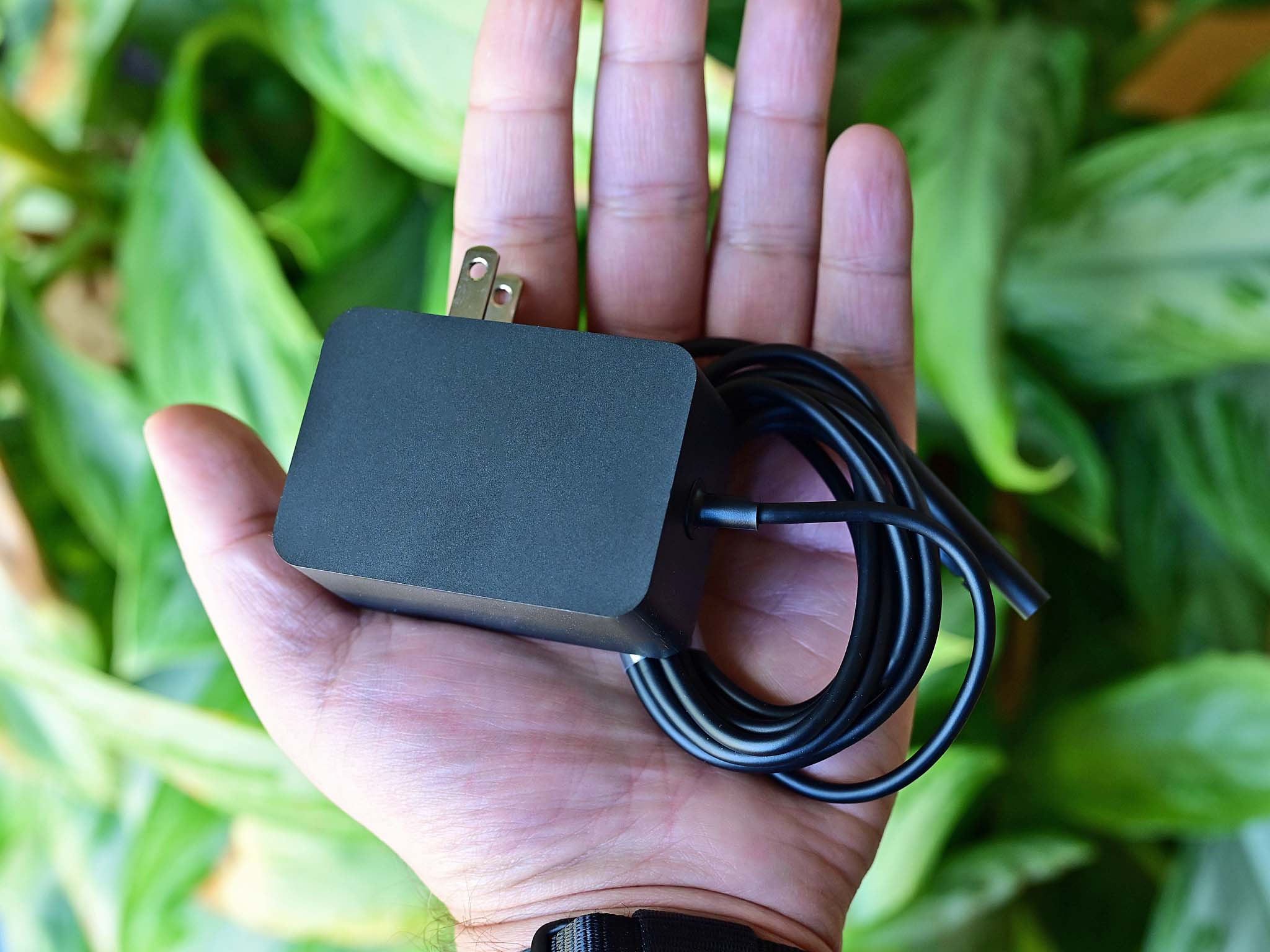
Optional 4G LTE (+$100) had no connectivity issues whatsoever and is extremely reliable. The "Surface Mobile Broadband" modem is carrier unlocked. It supports global brands including T-Mobile, Verizon, AT&T, and Sprint in the U.S. Speeds were on par with the Surface Pro X. LTE is an intriguing add-on value for Surface Go 2 letting you use the tiny PC anywhere in the world regardless of Wi-Fi. For those planning to use the Surface Go 2 regularly, the addition of LTE is encouraged.
Even if you do not opt for LTE, the new Intel AX200 with Wi-Fi 6 and Bluetooth 5 is welcomed over the previous Wi-Fi 5 and Bluetooth 4.1.
There is an improved Instant On with Surface Go 2. The PC can turn on and log into Windows 10 in just three seconds, letting it behave more like a smartphone. After six hours of idling on battery, the laptop goes into a proper hibernate (changeable under advanced power settings).
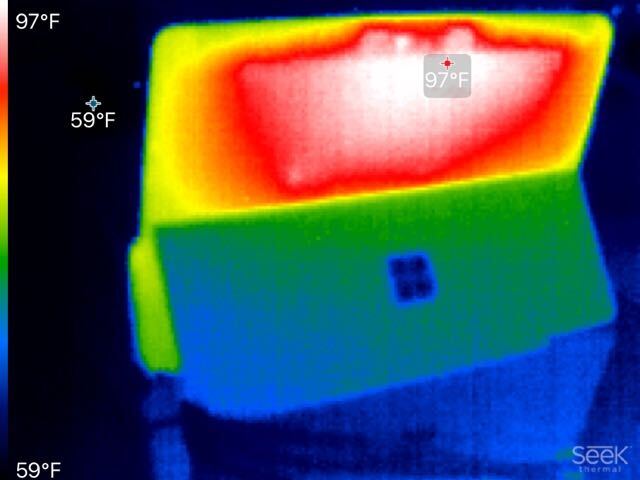

Finally, because the Core m3 is a fanless processor, there is no excessive heat with Surface Go 2. Temperatures rarely went above 101 degrees Fahrenheit (38 degrees Celsius), which is well below what most laptops get on their top decks.
When and where
Microsoft Surface Go 2 pricing and availability
The Surface Go 2 is now available in these markets, following its May 12 release:
- United States
- Canada
- Australia
- New Zealand
- Germany
- Austria
- UK
- Ireland
- France
- Switzerland
- Belgium
- Netherlands
- Denmark
- Finland
- Norway
- Sweden
- Italy
- Spain
- Portugal
- Poland
- Japan
Surface Go 2 will also be launching in several more markets in the coming weeks, starting with China on June 2. On June 18, Surface Go 2 will launch in Taiwan, Hong Kong, Thailand, Malaysia, and Singapore, before also launching in Bahrain, Oman, Kuwait, Qatar, UAE, Saudi Arabia, and India on July 14. Microsoft will also be launching Surface Go 2 in Mexico and South Africa, new markets for Surface, on August 25.
Multiple configurations and price points are depending on the consumer (Windows 10 Home in S-Mode) or business (Windows 10 Pro in S-Mode) SKUs:
Surface Go 2 Consumer
| SKU | Price |
|---|---|
| Intel Pentium GOLD 4425Y, 4GB RAM, 64GB eMMC | $399 |
| Intel Pentium GOLD 4425Y, 8GB RAM, 128GB SSD | $549 |
| Intel Core m3-8100Y, 8GB RAM, 128GB SSD | $629 |
| Intel Core m3-8100Y, 8GB RAM, 128GB SSD, LTE | $729 |
Surface Go 2 Commercial
Commercial customers have even more configurations to choose from, such as a Core m3 model with just 4GB RAM and 64GB storage. Commercial SKUs also come with Windows 10 Pro instead of Windows 10 Home in S mode:
| SKU | Price |
|---|---|
| Intel Pentium GOLD 4425Y, 4GB RAM, 64GB eMMC | $449 |
| Intel Core m3-8100Y, 4GB RAM, 64GB eMMC | $499 |
| Intel Core m3-8100Y, 8GB RAM, 128GB SSD | $679 |
| Intel Core m3-8100Y, 8GB RAM, 128GB SSD, LTE | $779 |
| Intel Core m3-8100Y, 8GB RAM, 256GB SSD, LTE | $879 |
So much more fun
Microsoft Surface Go 2: As good as it gets

There are multiple ways to evaluate the Surface Go 2 and whether it is a smash hit or just an overpriced mini PC.
Compared to the original Surface Go, Surface Go 2 (Core m3) is an enormous improvement thanks to that larger display, smaller bezels, improved Instant On, and a much faster processor. You'll need to grab the $629 model to see that difference versus the $400 one, but if you are using this device hours a day, it is absolutely worth it. You get nearly double the performance, and yet do not sacrifice battery life. With this configuration, the Surface Go 2 feels like a real PC now.
Surface Go 2 is the best Microsoft could have done in this form factor, and it addressed the original criticisms of the Surface Go.
Another way to look at Surface Go 2 is comparatively to other Windows laptops. Here, Microsoft wins by default. There is no other tablet PC this size that does this much. Assuming you want a 10.5-inch tablet PC that supports inking has excellent audio, a fully-articulating kickstand, microSD expansion, optional LTE, Windows Hello, all in a package that weighs just 1.2lbs (544g). It's actually an incredible machine making it ideal for students, professionals, business use, and journalists (especially if Surface Pro X is out of your price range).
But the Surface Go 2 also exists in the bigger world of Apple iPads – which device is better depends on your work style and goals. The Surface Go 2 is, at its heart, a real PC that can be docked and turned into a decently performing desktop one. The iPad is a tablet that is slowly getting better as a "real" PC but still falls short in some areas. Each has its strengths and weaknesses.
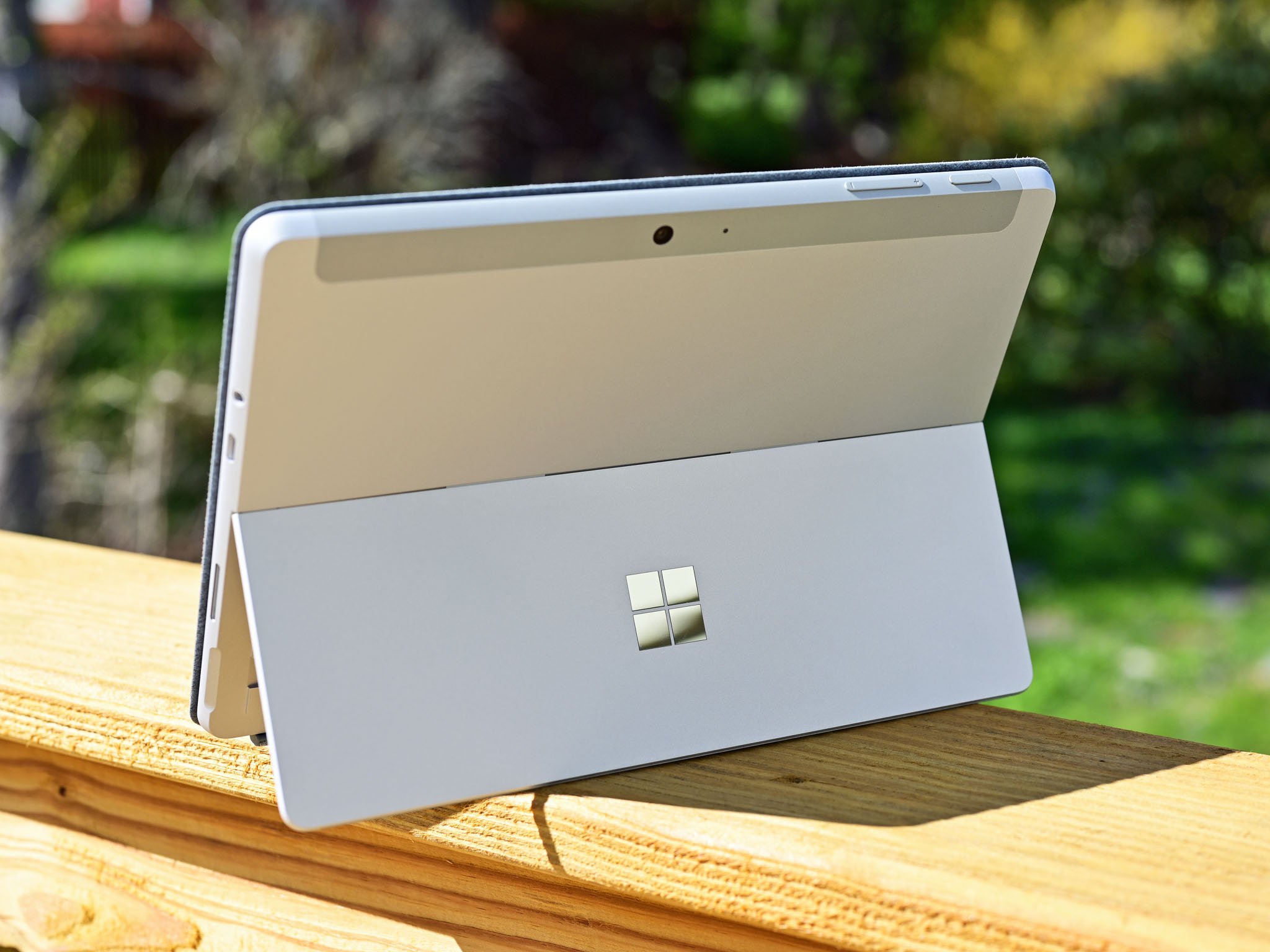
What Surface Go 2 proves, unfortunately, is Microsoft may have hit a wall in design and performance. There is no way to make such a PC better (read: faster) without dramatically increasing its cost. While the Core m3 is a massive improvement in Surface Go 2, it is still a two-year-old processor – a dual-core throwback in a world of octa-core silicon. I can't spin that as a positive; it's frankly sad.
Battery life, performance, costs – these are still massive challenges for Windows 10 PCs when competing against Apple that the Surface Go 2 does not, unfortunately, solve. The needle has moved significantly, but things like longer battery life and octa-core CPUs are desperately needed in this category.
That Intel problem is not Microsoft's fault, but it is not clear what else can be done with Surface Go save for some new, low-cost/high-performance processor technologies. One does wonder, however, how the Snapdragon 7c or 8c would have compared. It is a bit bewildering that Microsoft did not make this an ARM PC.
Should anyone buy the Surface Go 2 with Pentium Gold? Sure. If you plan to use the Surface Go 2 as a companion PC to be used only occasionally in addition to your regular desktop PC or laptop. The Pentium Gold chip is OK for web browsing, email, and even light games. But if your goal is to use the Surface Go 2 habitually, the Core m3 version is preferred every time. It's not just slightly faster, it's massively so, and you get the right amount of RAM and storage capacity.
The bottom line is Surface Go 2 is the best Microsoft could have done in this form factor, and it addressed most of the original Surface Go's criticisms. I genuinely enjoy using Surface Go 2, and I could easily imagine taking it on a hike or out for the weekend when I do not need a full laptop. The performance and 4G LTE let me use it anywhere without getting frustrated, and it's still just really cool. I get why Surface Go has its fans - there is nothing else like it around. But for a Surface Go 3, I'd like to see more revolution than evolution in regards to battery and performance.

Surface Go 2 gets a much-improved processor that finally delivers on speed, but without making battery life worse. Thinner bezels and a larger display go a long way to improve usability. With options for 4G LTE and a premium build, there is still nothing like Surface Go. Unfortunately, battery life and a small price bump demonstrate the limits in this category for Windows laptops.

Daniel Rubino is the Editor-in-chief of Windows Central. He is also the head reviewer, podcast co-host, and analyst. He has been covering Microsoft since 2007 when this site was called WMExperts (and later Windows Phone Central). His interests include Windows, laptops, next-gen computing, and wearable tech. He has reviewed laptops for over 10 years and is particularly fond of 2-in-1 convertibles, Arm64 processors, new form factors, and thin-and-light PCs. Before all this tech stuff, he worked on a Ph.D. in linguistics, performed polysomnographs in NYC, and was a motion-picture operator for 17 years.


